Hair braiding in the Bible unveils layers of cultural and spiritual significance, inviting a deeper exploration of ancient beliefs and practices.
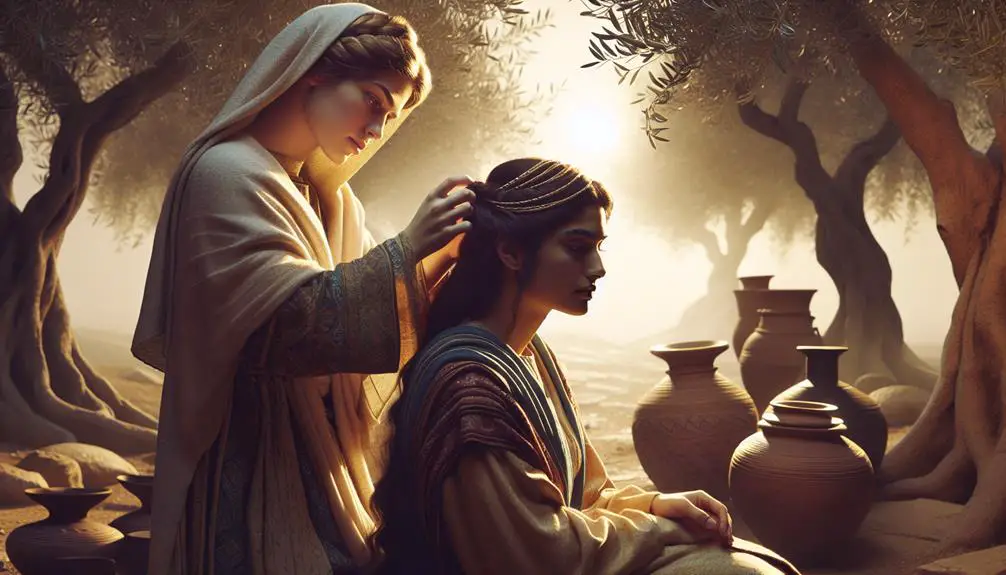
Meaning of Broided Hair in the Bible
As you weave through the intricate tapestry of biblical symbolism, you'll find the threads of broided hair interlaced with messages of modesty, cultural identity, and spiritual admonitions.
This ancient styling, more than a mere fashion statement, serves as a lens through which we can explore deeper societal and spiritual values of the times.
The biblical passages mentioning broided hair open a window into the roles and expectations of women, the cultural significance of hairstyles, and the evolving interpretations that continue to influence contemporary believers.
By examining these strands, you're invited to untangle the complex interplay between tradition, symbolism, and the modern understanding of biblical teachings.
Key Takeaways
- Broided hair in the Bible symbolizes social status, religious devotion, and personal identity.
- Interpretations of broided hair's symbolism require understanding its historical and cultural context.
- Biblical references to broided hair underscore themes of modesty, humility, and inner virtue over external appearance.
- Contemporary views on broided hair blend traditional interpretations with modern expressions of faith and personal identity.
Historical Context of Broided Hair
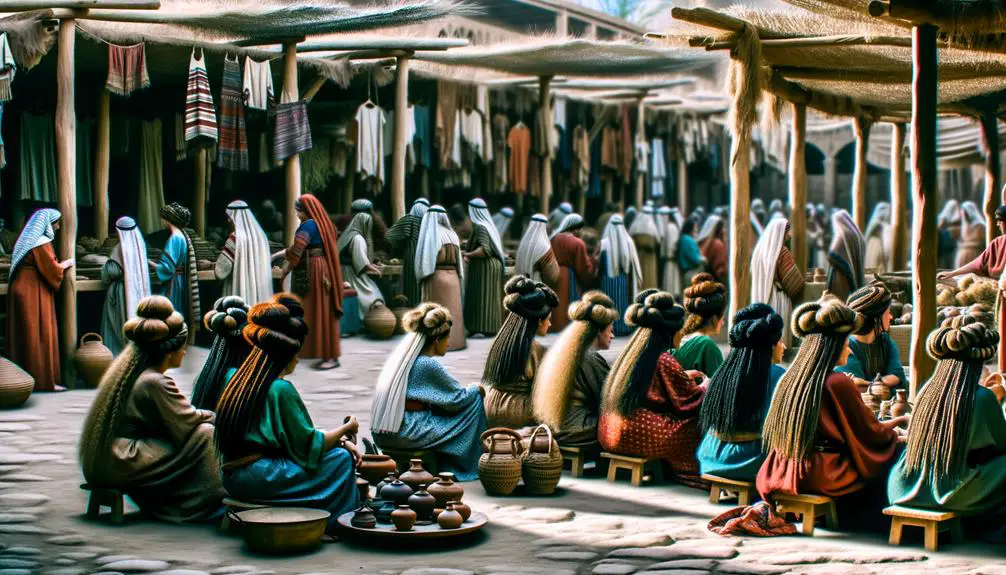
To understand the significance of broided hair in biblical times, it's essential to delve into the historical context in which this styling choice was both a cultural and a religious statement. You'll find that hair materials and braiding techniques play a pivotal role in deciphering the layers of meaning behind broided hair.
In these ancient societies, hair wasn't merely a part of one's appearance; it was a canvas, rich with social and spiritual symbolism. The materials used in braiding, such as fine threads of gold, colorful beads, and even precious stones, weren't arbitrary. They were carefully chosen to convey messages of wealth, status, and religious dedication. The incorporation of these materials into braids transformed an ordinary hairstyle into a declaration of identity and belief.
Braiding techniques, too, were laden with significance. The complexity and style of braid could indicate one's position within society or even one's marital status. Skilled artisans, often women, passed down these intricate techniques from generation to generation, preserving a rich cultural heritage. The act of braiding, therefore, was more than just a beautification process; it was a ritual, imbued with cultural and religious importance.
As you explore the historical backdrop of broided hair, you'll discover that it was a multifaceted practice. It wasn't just about the visual appeal but about weaving together strands of cultural identity, status, and spirituality. This understanding sheds light on why broided hair was mentioned in biblical passages, highlighting its deep-rooted significance in the tapestry of ancient society.
Symbolism in Biblical Passages
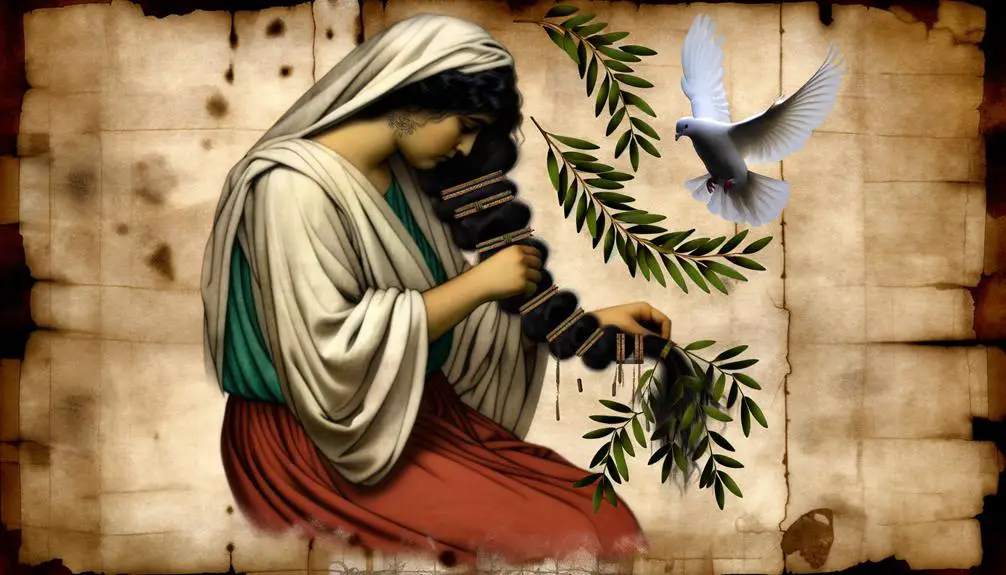
Broided hair in biblical passages serves as a powerful symbol, reflecting an intricate interplay of social status, religious devotion, and personal identity within ancient communities. This form of hair styling, often enriched with gold, silver, and precious stones, wasn't merely about aesthetic appeal but carried deeper meanings that were both personal and societal. As you delve deeper into the scriptures, you uncover layers of symbolism that extend beyond the surface.
The use of color symbolism in these narratives is particularly telling. Colors like scarlet, often used in conjunction with broided hair, didn't just signify beauty; they were emblematic of wealth, power, and sometimes, caution or danger. This dual symbolism underscores the complexity of interpreting biblical texts, where the physical often mirrors the spiritual or moral condition.
Fabric metaphors, too, are rife within these passages, weaving a rich tapestry of meanings. Broided hair, akin to fine linen or silk, could signify purity, sanctity, or divine favor. Yet, in other contexts, it might hint at vanity or worldly excess, challenging readers to discern the underlying message.
Key aspects to consider include:
- The cultural and historical context behind hair braiding and adornment.
- The intended audience and their likely interpretations of these symbols.
- The broader narrative or theological implications of these aesthetic choices.
Understanding broided hair in biblical passages requires a nuanced approach, one that appreciates the depth of symbolism embedded in ancient texts. It's a fascinating study that reveals much about the values, beliefs, and daily lives of ancient peoples.
Broided Hair and Modesty
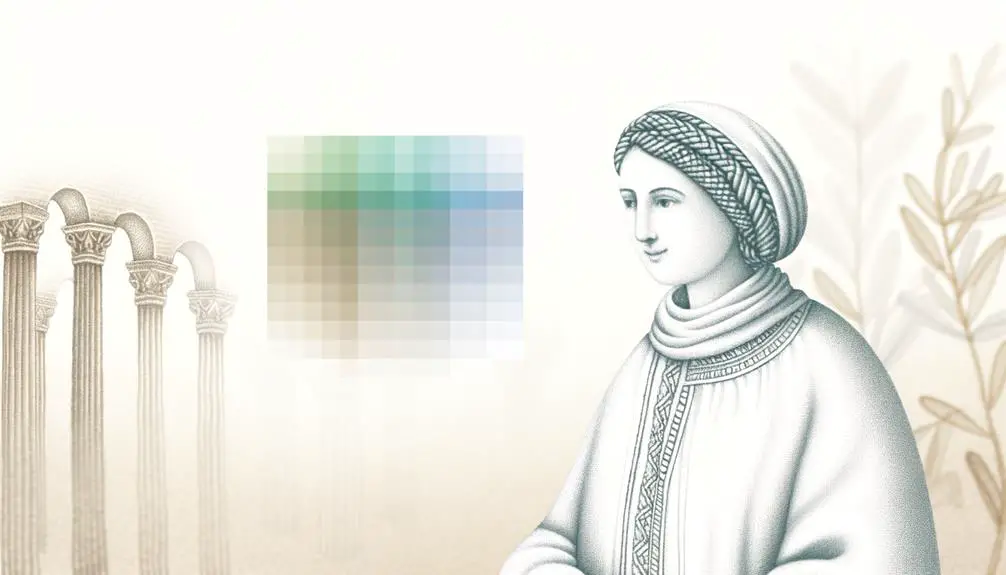
Exploring the concept of modesty, the Bible's references to broided hair invite a reevaluation of its role in expressing humility and piety within spiritual contexts. The Scriptures, at times, caution against elaborate hairstyles, suggesting that they may detract from a focus on inner virtues. This perspective prompts you to consider how hairstyle freedom and adherence to fashion trends can align or conflict with biblical teachings on modesty.
In analyzing these biblical passages, it's crucial to distinguish between cultural norms and timeless principles. While the Bible doesn't explicitly condemn all forms of personal adornment, including broided hair, it emphasizes the importance of modesty and humility. This implies that the expression of one's faith and character shouldn't solely rely on external appearances but should also reflect an inward commitment to spiritual values.
The intersection of hairstyle freedom and fashion trends with biblical modesty suggests a balanced approach. You're encouraged to enjoy personal expression through fashion, including hairstyles, while maintaining a focus on modesty. This balance allows for individual creativity and adherence to personal convictions without compromising the biblical emphasis on humility.
The conversation around broided hair and modesty in the Bible ultimately challenges you to reflect on your priorities and the expression of your faith. It invites a thoughtful consideration of how your choices, including those related to personal appearance, align with your spiritual values and the broader biblical call to live modestly and humbly.
Cultural Significance in Ancient Times
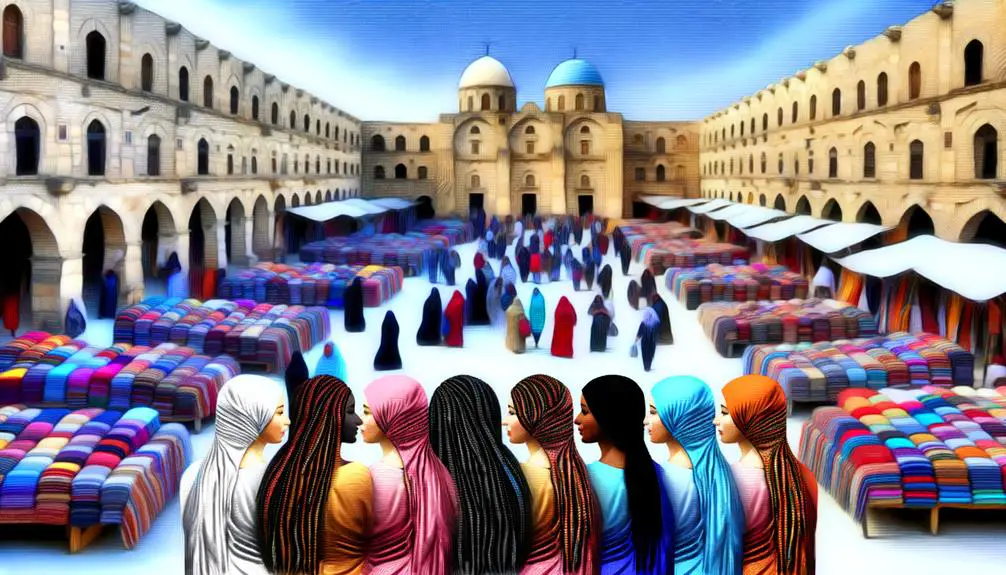
You'll find that broided hair in ancient times wasn't merely a fashion statement but deeply rooted in cultural practices and beliefs.
These hairstyles served as symbols of identity, reflecting one's social status, tribe, and even marital status.
The intricate patterns and techniques of ancient styling practices underscore their significance beyond mere aesthetics.
Ancient Styling Practices
Delving into ancient styling practices reveals their profound cultural significance in ancient times. You'll find that hair wasn't merely about appearance; it was a rich tapestry woven with cultural threads. The ancient people used a variety of hair tools and dyeing methods, showcasing a sophisticated understanding of aesthetics and identity, even before the term was coined in modern psychology.
Key aspects of these practices included:
- Hair tools: Combs, pins, and brushes made from natural materials.
- Dyeing methods: Utilizing plant extracts and minerals to alter hair color.
- Styling techniques: Braiding, twisting, and locking hair to signify different social or marital statuses.
These elements combined to not only beautify but also convey messages about one's place in the societal hierarchy, religious beliefs, and personal wealth.
Symbolism and Identity
Hair, in ancient times, wasn't just a personal choice but a symbol of one's identity and societal role, deeply intertwined with cultural beliefs and practices. The politics of hair and the freedom to style it were indicative of one's status, religious beliefs, and even marital status. Styling freedom wasn't merely about aesthetics but a form of self-expression and cultural identity.
Culture |
Significance |
Styling Freedom |
|---|---|---|
Egyptian |
Status Symbol |
Elaborate Wigs |
Hebrew |
Religious Identity |
Modest Styles |
Greek |
Wealth and Status |
Intricate Braids |
Roman |
Political Power |
Lavish Adornments |
Celtic |
Warrior Identity |
Long, Untamed |
This table highlights how different cultures utilized hair as a canvas to reflect personal and communal ethos. Hair politics, evolving through time, underscored the intrinsic human desire for identity and expression within a societal framework.
Interpretations by Biblical Scholars

Throughout history, biblical scholars have debated the meaning of 'broided hair' as mentioned in the scriptures, focusing on its cultural and theological implications. These discussions often revolve around several key aspects:
- Textual variations in ancient manuscripts that mention broided hair
- Scholarly debates on the historical context and societal norms of the time
- Interpretations of the term's significance in spiritual and moral teachings
One primary area of focus is the textual variations found in different ancient manuscripts. These variations lead to a range of interpretations about what 'broided hair' precisely refers to and its connotations in biblical times. Scholars meticulously compare these texts to understand the nuances in language and meaning.
Additionally, scholarly debates play a significant role in unraveling the cultural and theological underpinnings of broided hair in the scriptures. Experts in biblical history and theology delve into the societal norms of the era when these texts were written to grasp the broader context. They explore how hairstyles, as part of one's attire, could symbolize various aspects of identity, status, and religious devotion.
The interpretations of 'broided hair' by biblical scholars are nuanced and multidimensional, considering:
- The historical and cultural context of the biblical era
- The potential symbolic meanings attached to hairstyles in the scriptures
- The broader theological implications of adhering to or deviating from the norms mentioned in the biblical texts
These scholarly discussions contribute significantly to our understanding of the biblical references to broided hair, offering insights into the complex interplay between cultural practices and spiritual teachings in ancient times.
Implications for Contemporary Believers
As you consider the implications for contemporary believers, it's essential to evaluate how cultural interpretations today shape the understanding of broided hair within various communities. Personal faith expression through one's appearance, including hairstyles, intersects significantly with these cultural norms, influencing individual choices.
Additionally, church dress codes often reflect or challenge these interpretations, further complicating the relationship between personal faith expression and communal religious identity.
Cultural Interpretations Today
In contemporary religious discourse, interpretations of broided hair have evolved, reflecting diverse cultural perspectives and challenging believers to reconsider traditional views. This shift is significantly influenced by modern fashion movements integrating historical and biblical hairstyling trends. The global exchange of cultural practices affecting personal and collective expressions of faith also plays a role. Additionally, technological advancements in hairstyling tools and products enable more complex and varied interpretations of broided hair.
These factors contribute to a nuanced understanding of broided hair within religious contexts, encouraging a dialogue between tradition and contemporary lifestyle choices. As followers navigate these waters, they're tasked with balancing respect for doctrinal teachings with the expression of individual identity, influenced by current hairstyling trends. This balance is crucial in fostering a faith that's both personal and reflective of broader cultural shifts.
Personal Faith Expression
The personal expression of faith through broided hair presents a complex intersection of individual identity and religious adherence for contemporary believers. Modern interpretations of this practice vary, reflecting a spectrum of beliefs and values within the Christian community.
For some, broided hair is a form of artistic representation, a visible manifestation of their spirituality and dedication to their faith. This artistic element allows individuals to explore and express their religious identity in a deeply personal manner, navigating the sometimes-tense relationship between personal conviction and communal religious expectations.
As believers interpret biblical references to broided hair through the lens of contemporary culture, they engage in a dynamic process of defining their spiritual self-expression, balancing tradition with personal faith journeys.
Church Dress Codes
Church dress codes often serve as a barometer for the evolving dynamics between traditional religious expectations and contemporary believers' quest for personal expression. As you navigate these waters, consider how modern attire intersects with worship etiquette. Here are key points to ponder:
- Flexibility vs. Tradition: Balancing modern style with traditional decorum can be challenging but also enriching for community identity.
- Inclusivity: Ensuring dress codes don't alienate or exclude is crucial for fostering an environment of belonging.
- Personal Faith Expression: Dress can be a form of worship and personal faith expression, reflecting individuality while respecting collective norms.
Analyzing these aspects, you'll find that church dress codes aren't just about clothes but about negotiating the boundaries of faith, culture, and personal identity in a contemporary context.
Gender Roles and Hair Styling
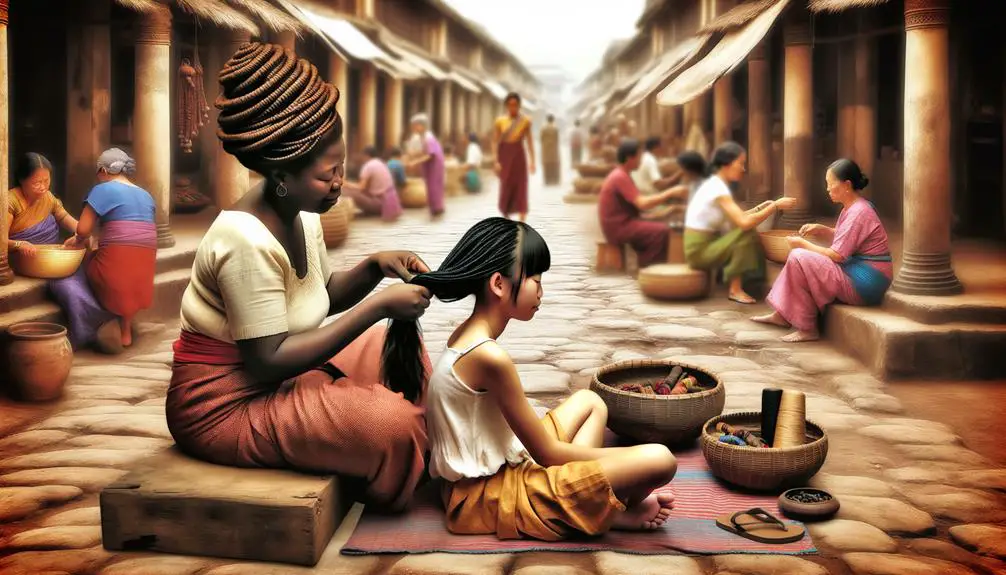
Throughout history, hair styling has played a crucial role in defining gender roles and societal expectations. In ancient cultures, hairstyles were often a marker of one's social status, profession, and gender. Men and women adhered to distinct hair codes that symbolized their roles within society.
However, as you delve into the modern era, you'll notice a significant shift. Modern trends have increasingly blurred the lines between traditional gender-specific hairstyles. The advent of innovative styling tools and products has democratized hair styling, allowing individuals to experiment with their looks regardless of their gender.
You'll find that today's society embraces a more fluid approach to hair. Men can sport long, carefully styled locks without the stigma once associated with such choices. Similarly, women can opt for short, edgy cuts that were traditionally seen as masculine. This shift isn't merely cosmetic; it's reflective of a broader cultural movement towards gender equality and the breaking down of stereotypes.
The use of styling tools, once marketed primarily to women, has become widespread across genders. Flat irons, curling wands, and sophisticated hairdryers are now staples in many people's grooming arsenals, regardless of gender.
This evolution in hair styling practices underscores a significant societal shift. It reflects a growing acknowledgment that personal expression transcends traditional gender boundaries. As you explore the impact of hair styling on gender roles, it becomes evident that hair isn't just a matter of personal vanity but a powerful medium for expressing identity, challenging norms, and fostering inclusivity.
Broided Hair in Prophetic Imagery
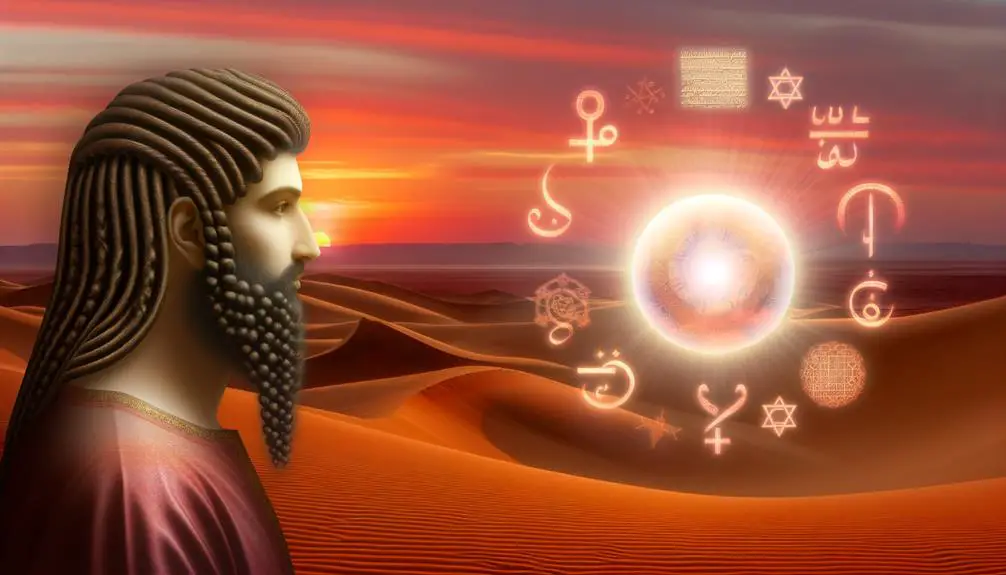
In analyzing prophetic imagery, it's crucial to recognize that broided hair often embodies more than mere aesthetic value; it symbolizes deeper spiritual or moral messages. This intricate styling of hair in biblical narratives isn't just about personal or cultural preference but delves into the realm of hair politics, carrying rich prophetic symbolism that speaks to the underlying social, ethical, and spiritual dynamics of the time.
The significance of broided hair in prophetic imagery can be unpacked through several lenses, including:
- Hair politics: The styling and presentation of hair, particularly broided hair, within prophetic texts, can act as a narrative device to comment on issues of identity, purity, and societal norms. It's a medium through which the prophets articulate God's approval or disapproval of certain behaviors and attitudes.
- Styling innovation: Broided hair, with its complexity and beauty, can also symbolize innovation or deviation from traditional norms. In a prophetic context, this could represent a shift from old ways to new directives from God, urging the community to embrace change and prepare for new spiritual seasons.
- Spiritual and moral messages: Beyond its physical appearance, broided hair in prophetic imagery often carries deeper meanings related to virtue, devotion, and moral integrity. It can signify a call to purity, a reminder of one's covenant with God, or even a warning against vanity and superficiality.
Frequently Asked Questions
How Did the Methods and Materials for Creating Broided Hair in Biblical Times Differ From Modern Braiding Techniques?
You're looking at how ancient braiding techniques contrast with today's methods. Back then, they lacked modern tools, relying on natural materials and simple tools.
Unlike the elaborate braiding festivals we see today, where advanced tools and synthetic materials are common, ancient methods were more about utility and tradition.
The evolution from those basic techniques to today's artistic and diverse braiding styles highlights a significant transformation in cultural practices and technological advancements.
Were There Any Specific Occasions or Ceremonies in Which Broided Hair Was Particularly Encouraged or Discouraged Outside of Religious Contexts?
You may wonder if broided hair held significance beyond religious texts. In historical contexts, hair symbolism intertwined with ceremonial attire, marking social or marital status.
However, specific to your inquiry, outside religious ceremonies, there isn't substantial evidence pinpointing occasions where broided hair was particularly promoted or shunned.
The practice likely varied by culture and era, making it a complex topic worthy of further scholarly exploration to fully understand its nuances.
How Have Depictions of Broided Hair in Biblical-Themed Art Evolved Over Centuries, and What Impact Has This Had on Public Perception?
You've noticed how artistic interpretations of broided hair in biblical-themed art have evolved, reflecting cultural influences and shifts.
This evolution has significantly shaped public perception, subtly altering how you view these ancient narratives.
Artists have moved from strictly literal depictions to more nuanced, interpretative representations, weaving in their societal contexts.
This shift not only showcases the adaptability of religious iconography but also highlights the impact of cultural evolution on art's interpretation.
Can the Concept of Broided Hair in the Bible Be Linked to Any Health Practices or Concerns in Ancient Communities?
You're exploring if ancient communities linked braided hair with health practices or concerns. Indeed, personal hygiene and disease transmission were critical in these societies.
Braided hair, requiring close contact and shared tools, could have implications for spreading illnesses. Analyzing historical texts and artifacts, one finds that meticulous grooming habits, including hair care, were often tied to preventing disease, suggesting a conscious connection between braided hairstyles and health practices in these communities.
Are There Notable Differences in How Broided Hair Was Perceived and Represented in Biblical Texts Compared to Other Contemporary Ancient Texts From Neighboring Cultures?
You'll find that cultural symbolism and gender roles play a significant role in how broided hair is perceived across ancient texts.
In comparison to biblical representations, neighboring cultures often imbued broided hair with different values or connotations.
While the Bible might link it to modesty or vanity depending on the context, other ancient texts could emphasize its connection to status, identity, or even magical properties, showcasing a diverse cultural understanding.
Conclusion
In conclusion, broided hair in the Bible serves as a tapestry, weaving together notions of modesty, cultural identity, and spiritual symbolism.
As you've seen, scholars interpret its significance through various lenses, highlighting its role in delineating gender norms and enhancing prophetic messages.
For contemporary believers, these ancient threads offer insight into living a life that balances outward appearance with inner piety.
Ultimately, understanding the biblical perspective on broided hair invites a deeper reflection on the intersections of faith, culture, and personal expression.



Sign up